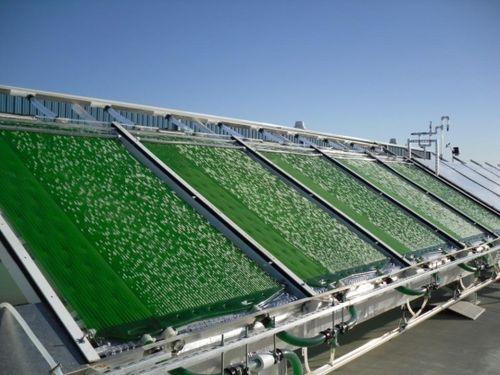Microbial Fuel Production
Overview
Microbial fuel production uses microorganisms to convert sunlight and CO2 into fuel or oils that can be converted to fuels.
Details
- Bioengineered algae grown in open ponds, which are then harvested and the fatty oil they contain is converted to a biodiesel
- Bioengineered cyanobacteria which have been modified to secrete hydrocarbons directly into the water they live in. They are grown in enclosed panels.
Algae
There are numerous variations of growing algae to produce biodiesel. Theoretical production is up to 8 times that of corn ethanol because algae grow fast and produce closer to a final product. Corn sugars must be fermented by yeast, and then distilled, which is less efficient, although pretty low tech. Algae store up to 50% of their body weight in plant oils. They are harvested, then pressed to extract the oil. If you can burn the oil directly you are done, but usually they are converted chemically by trans-esterification into a biodiesel, which can be used in diesel engines.
The growth environment varies from open ponds to enclosed "bioreactor" tubes, and ambient CO2 to elevated levels from various sources. The setup cost then varies quite a bit also.
Cyanobacteria
This process is more capital intense to set up, but has a higher productivity per land area, and simpler post-processing, as the bacteria emit the hydrocarbon directly and it only needs to be separated from the water bath they live in.
Robertson et al, "A new Dawn for industrial Photosynthesis", Photosynth Res (2011) 107:269-277. Published with open access at Springerlink.com 13 Feb 2011
This paper describes how by optimizing the genetics of a cyanobacteria to excrete the desired hydrocarbon directly. and paying attention to efficiency losses, they are able to produce 5 times as much product (15,000 gallons/acre/year) as algae (3,500 gallons/acre/year) and many times higher productivity as plant biomass (440 gallons ethanol from corn/acre/year). This type of system feeds high levels of CO2 into the system, derived from things like coal burning plants or other industrial processes. Without the concentrated CO2 the bacteria would grow slower.
